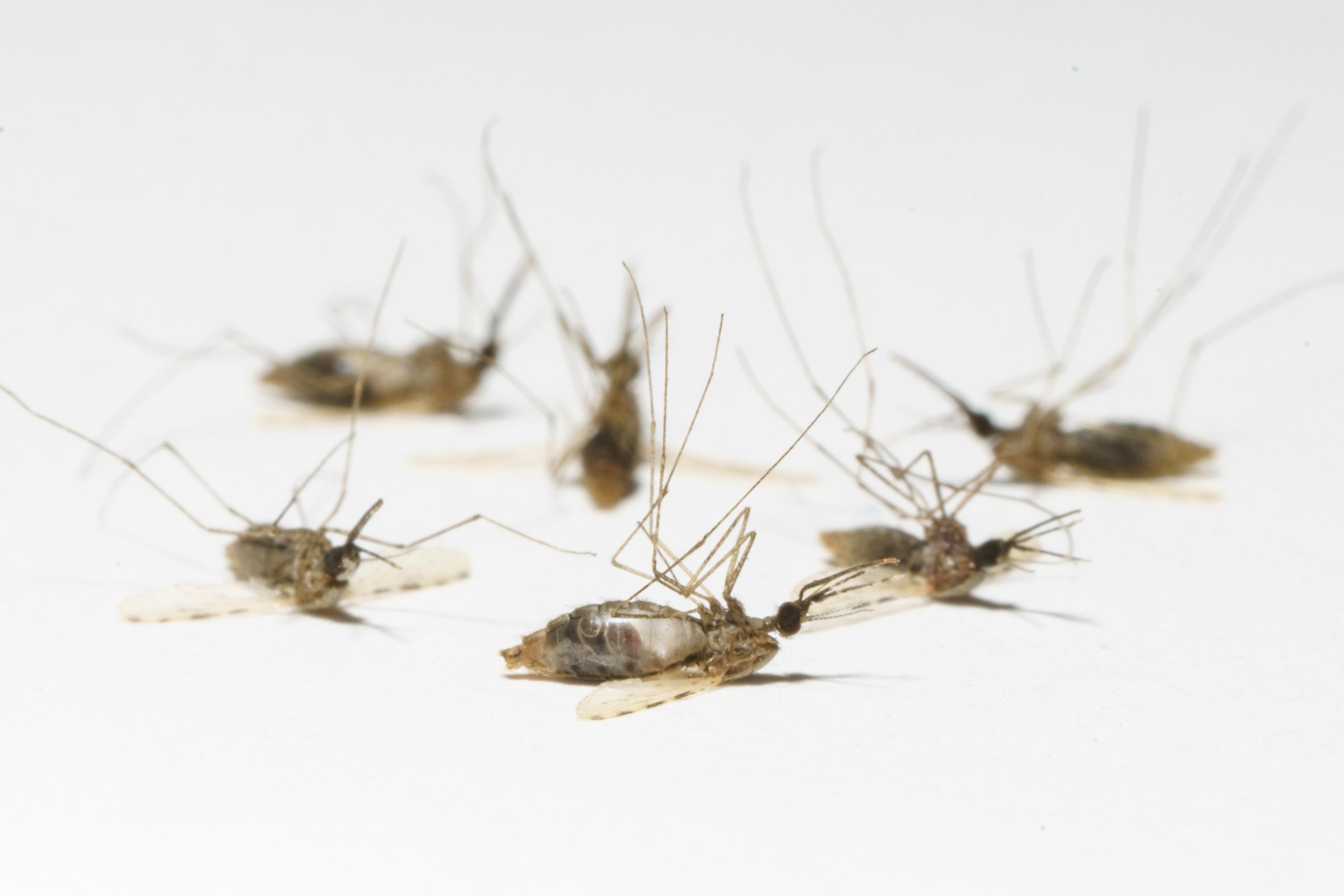
Diseases spread by pests like mosquitoes and fleas remain global health problems. To prevent transmission, public health strategy has largely focused on using insecticides or bed nets. Vaccines are also under development for diseases like Zika, but few are approved for use. Now, a new study suggests that medicines already used for pets to protect against fleas and ticks could offer similar protection for humans.
In the report, published Monday in the journal Proceedings of the National Academy of Sciences, researchers at the nonprofit drug discovery institute Calibr and TropIQ Health Sciences report that drugs called isoxazolines, which are currently sold as veterinary products like fluralaner (Bravecto) and afoxolaner (NexGard), might also work in humans to kill off pests like mosquitoes that spread diseases like Zika and malaria.
To reach these findings, the researchers tested fluralaner and afoxolaner on disease-spreading mosquitoes and sand fleas and found that the drugs were effective at killing off the insects that consumed the compounds through samples of human blood. Using computer modeling, the researchers then estimated that giving isoxazoline drugs to about a third of people living in areas prone to outbreaks of Zika could prevent up to 97% of infections. In areas where malaria is seasonal, like Senegal, Sudan, Madagascar, Namibia, Botswana and Zimbabwe, the researchers estimated that giving the drug to about a third of people in those areas could prevent more than 70% of new cases. “That’s pretty dramatic if you think about it [being used] in a disaster-like scenario,” says senior study author Matt Tremblay, the chief operating officer of Calibr and Scripps Research (which is affiliated with Calibr).
When used in animals, the drugs kill off pests by harming the insects’ nervous systems. If it proves safe and effective in humans, the researchers suggest that when a disease-spreading bug bites a person taking the medication, that insect would die before they could bite another person. The researchers also estimate that a single oral dose of under 500 mg of the drugs could provide protection for 50 to 90 days in humans.
The researchers say more studies are needed to prove the safety and effectiveness of isoxazolines for humans, but the fact that the drugs are already on the market for animals could shave about two to three years off the usual drug-development process. The researchers are in the early stages of planning a phase I study in healthy volunteers.
Tremblay says he and his co-authors are largely focused on how the drugs could benefit the developing world and areas with less access to modern medical infrastructure. However, they envision a possible benefit for other regions, too. “I do think having it available as a reactive countermeasure in places like Florida and South America is something that’s viable,” he says. “We are definitely considering both developed and developing world applications.”
More Must-Reads From TIME
- The 100 Most Influential People of 2024
- The Revolution of Yulia Navalnaya
- 6 Compliments That Land Every Time
- What's the Deal With the Bitcoin Halving?
- If You're Dating Right Now , You're Brave: Column
- The AI That Could Heal a Divided Internet
- Fallout Is a Brilliant Model for the Future of Video Game Adaptations
- Want Weekly Recs on What to Watch, Read, and More? Sign Up for Worth Your Time
Contact us at letters@time.com